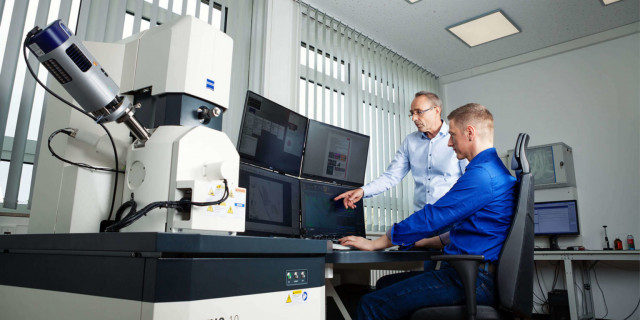
Table of contents
-
What can KSK Analysis Planning Design do for you in the field of safety engineering?
- Safety Engineering
- Safe side.
- Your contact
What can KSK Analysis Planning Design do for you in the field of safety engineering?
Safety Engineering
Safety engineering is an important field that deals with ensuring the safety of systems and processes. In our increasingly complex world, safety engineering plays a central role in minimizing risks and averting dangers. We highlight the essential aspects of safety engineering, from the methods and approaches to the training and processes used to improve safety.
Safe side.
The design of our components and cooling systems is based, among other things, on the requirements of the Pressure Equipment Directive 2014/68/EU and, where applicable, on the requirements of the Machinery Directive 2006/42/EC. We attach great importance to pragmatic assessments and implementation of the guidelines with a sense of proportion, ensuring that your converted system is safe, functional, and easy to operate for everyone involved. To achieve maximum safety in dealing with the guidelines, we work closely with independent testing bodies and consulting experts. The end result is that your plant is not only safe, but also ensures the approval of your colleagues in occupational safety.
Your contact

Dipl.-Ing. (TU) Michael Rosenthal
Project Engineer
+49 (0) 2364 10539-24
What is safety engineering and why is it important?
How is the term safety engineering defined?
Safety engineering, also known as safety technology, encompasses the application of principles and procedures to ensure the safety of systems and processes. Various methods are used to identify hazards at an early stage and mitigate risks. Safety requirements are defined to ensure that both technical and organizational measures are implemented effectively. Safety engineering is a key issue in many areas, from occupational safety to IT security, and aims to continuously improve the safety of systems.
What role does safety play in safety engineering?
Safety is an essential component of safety engineering. This field is concerned with identifying hazards and taking measures to minimize them. Safety does not only mean protection against physical hazards, but also includes IT security and protection against cyber threats. The application of safety standards, such as IEC standards, ensures that safety requirements are met. Safety is essential in today's world and forms the basis for society's trust in technical systems and processes.
Why is safety engineering important for our society?
Safety engineering is of great importance to our society because it helps to minimize risks and hazards in various areas. Whether in the development of new technologies or the improvement of existing systems, safety engineering ensures that safety measures are taken to guarantee public safety. In an increasingly complex world, the principles of safety engineering are crucial to ensuring the reliability and safety of systems. Without this discipline, many of the technologies and infrastructures we rely on every day would not be safe to operate.
What methods are used in safety engineering?
Which safety methods are most effective?
Safety engineering uses numerous methods to improve the safety of systems. One of the most effective methods is fault tree analysis, which makes it possible to identify potential sources of error in a system. This method helps to systematically identify vulnerabilities and take appropriate measures to reduce risk. Other important methods include risk analysis and hazard assessment, which are used to evaluate risks and develop appropriate protective measures. The choice of the right method depends on the specific requirements and the context in which it is applied.
How do different safety approaches differ?
The various safety approaches in safety engineering differ mainly in their focus and specific areas of application. While the classic approach to occupational safety focuses on protecting employees and preventing accidents, the field of IT security focuses on protecting information and data. Radiation protection, on the other hand, deals with protection against radioactive hazards. Each approach has its own methods and techniques that are specifically tailored to the respective risks and requirements. This variety of approaches makes it possible to implement safety measures in a targeted and effective manner.
In which areas are specific methods used?
Safety engineering is used in a wide range of areas, including corporate security, fire protection, and radiation protection. In corporate security, methods are developed to ensure the security of corporate assets and information. In fire protection, special techniques are used to minimize fire risks and increase the resilience of buildings. Radiation protection requires specific procedures to control and reduce exposure to ionizing radiation. Each of these areas requires customized approaches and specific safety methods to meet the respective requirements.
How can risks be analyzed in safety engineering?
What analysis methods are commonly used in this field?
In safety engineering, various analysis methods are used to assess and minimize risks. A widely used method is hazard analysis, which aims to identify potential hazards and assess the associated risks. Other important methods include fault tree analysis and root cause analysis, which help to understand and eliminate the causes of safety problems. These analysis methods are crucial for closing security gaps and increasing the reliability of systems. Each method has its specific advantages and is selected depending on the context and requirements.
How do you perform an effective risk analysis?
Effective risk analysis in safety engineering begins with identifying potential hazards and assessing the associated risks. Both technical and organizational factors are taken into account. Measures to reduce risk are then developed and implemented. It is important that risk analysis is carried out systematically and comprehensively in order to identify all potential safety issues. Involving experts from different areas can help to improve the quality and accuracy of the analysis. Regular reviews and updates of the risk analysis are necessary to respond to new threats and developments.
What are the sources of error in risk analysis?
When conducting a risk analysis, various sources of error can arise that impair the accuracy and effectiveness of the analysis. A common source of error is insufficient consideration of all relevant factors, which can lead to an incomplete analysis. Another error is underestimating or overestimating the risks, which can lead to inappropriate safety measures. In addition, communication problems between those involved can impair the quality of the analysis. To avoid these errors, it is important to plan and carry out the analysis carefully, involve all relevant stakeholders, and review the results regularly.
How does safety engineering improve safety?
What processes are used to improve safety?
Safety engineering uses various processes to continuously improve safety. These include implementing safety measures, regularly reviewing and updating safety concepts, and monitoring and analyzing safety incidents. By applying these processes, safety gaps can be identified and remedied before they lead to serious problems. In addition, training and awareness programs play an important role in strengthening employee safety awareness and promoting a culture of safety within the company.
How do you deal with complex safety systems?
Dealing with complex safety systems requires a deep understanding of the underlying technologies and specific safety requirements. It is important to develop systematic approaches that take both technical and organizational aspects into account. The integration of security measures throughout the entire life cycle of a system is crucial to ensuring security from the outset. In addition, regular tests and audits should be carried out to verify the effectiveness of security measures and make continuous improvements. An interdisciplinary approach involving experts from different fields can help to manage complexity.
What developments are there in the field of security technology?
There are continuous new developments in the field of security technology aimed at improving the security of systems. These include advances in sensor and monitoring technology that enable early detection of security threats. The development of new software solutions for automated security monitoring and analysis also plays an important role. In addition, new standards and norms are regularly developed that form the basis for secure systems. These developments help to meet security requirements in a constantly changing world and increase the resilience of systems to new threats.


Analysis and Advice
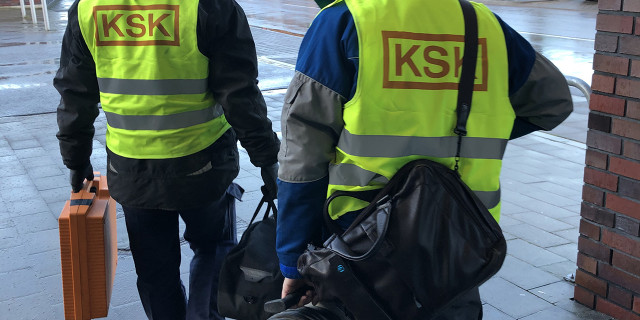
Project management
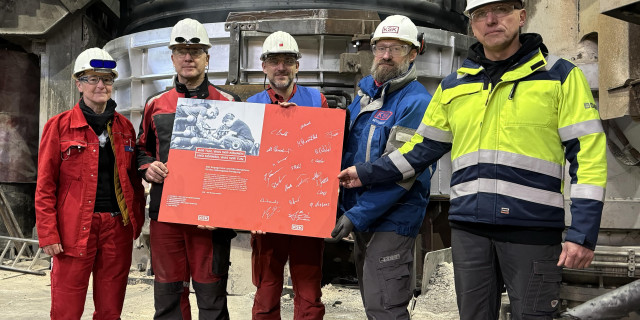
Commissioning of Plants
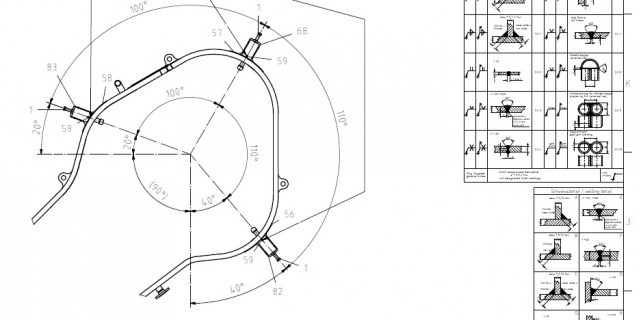
Technical Documentation
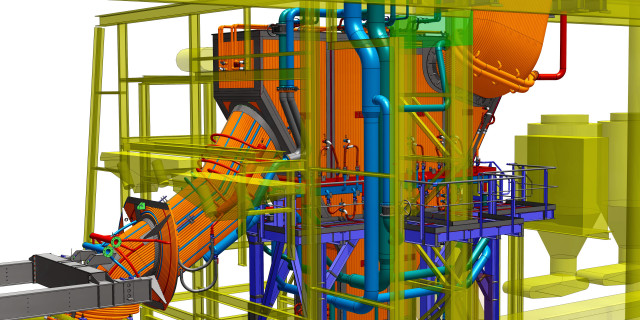
Conceptual Engineering

Conceptual Engineering
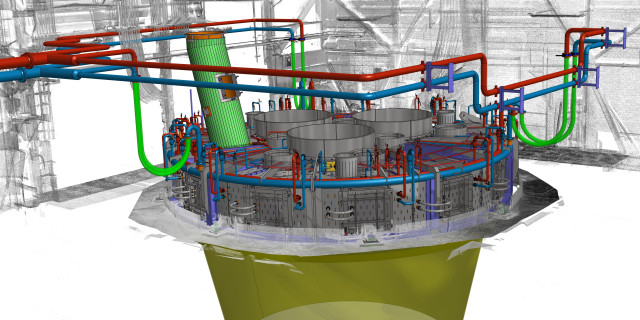
Engineering Office
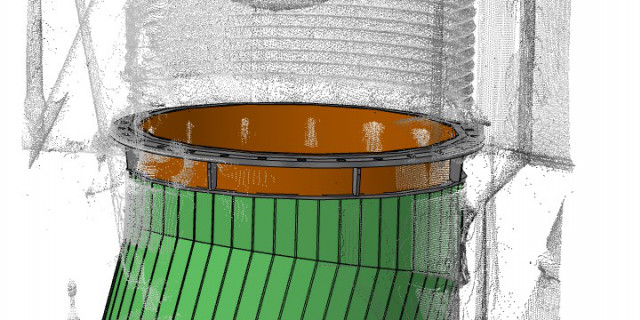
3D Measurement
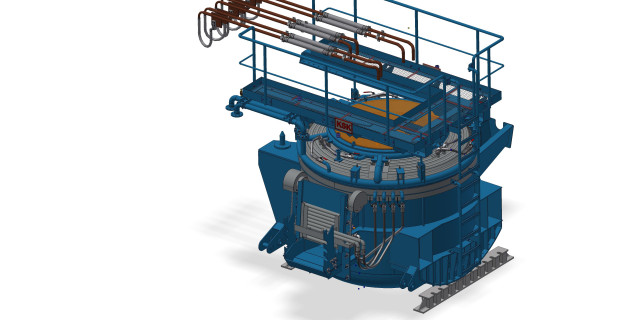
Reverse Engineering
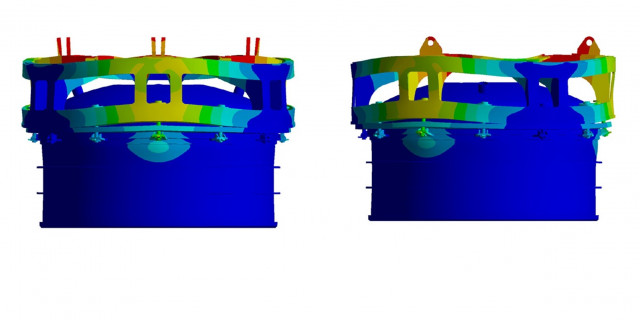
FEM Simulation
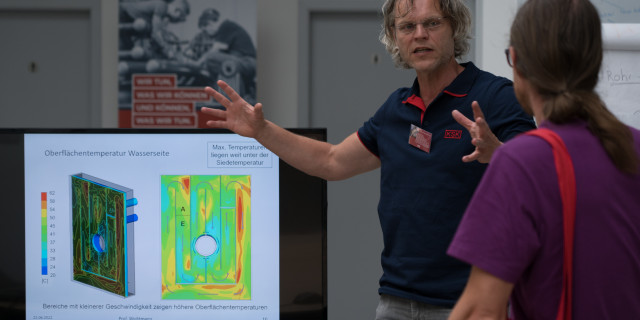
CFD Simulation
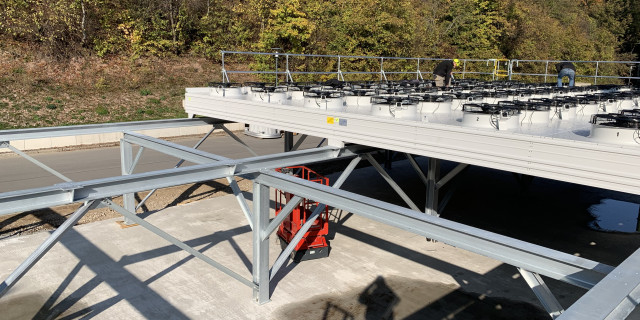
Structural Steel Statics
Table of contents
- Q: What is safety engineering?
- Q: What methods are used in safety engineering?
- Q: Why is occupational safety important in companies?
- Q: How can the security of IT systems be ensured?
- Q: What tasks are involved in hazard prevention in safety engineering?
- Q: Which standards are important in the field of safety engineering?
- Q: Which areas are covered by corporate security?
- Q: What role does fire protection play in safety engineering?
Q: What is safety engineering?
A: Safety engineering is a field of engineering that deals with the analysis, evaluation, and minimization of risks and the safety of systems. The aim is to identify hazards and develop measures to minimize them. Safety engineering is a field of engineering that deals with the analysis, evaluation, and minimization of risks and the safety of systems. The aim is to identify hazards and develop measures to minimize them.
An essential part of safety engineering is risk analysis, which identifies potential sources of danger and evaluates their possible effects. Various methods and tools are used for this purpose, such as fault tree analysis, hazard and risk analysis (HAZOP), and failure mode and effect analysis (FMEA).
In addition to identifying risks, the development of safety concepts also plays a central role. This includes the planning and implementation of technical, organizational, and personnel measures to ensure the safety of systems and processes. This also includes training employees in the safe use of machines and systems, as well as regular maintenance and inspection of safety-related systems.
Another important aspect of safety engineering is compliance with legal and normative requirements. Engineers must ensure that their safety concepts comply with applicable standards and regulations in order to minimize liability risks and ensure the safety of people and the environment.
In practice, safety engineering is used in numerous industries, including the smelting industry, the chemical and process industries, and construction. The increasing complexity of modern systems and the integration of new technologies such as artificial intelligence and the Internet of Things (IoT) present safety engineers with ever new challenges, but also require innovative approaches to ensure system safety.
In summary, safety engineering is an interdisciplinary field that combines technical knowledge with methodological approaches to risk assessment and minimization in order to ensure the safety of people, systems, and the environment.
Q: What methods are used in safety engineering?
A: Safety engineering uses various methods, such as fault tree analysis, to identify and minimize potential hazards. These methods are central to improving the safety of systems. Another important approach in safety engineering is event tree analysis, which is used to investigate the possible consequences of an event that has occurred. While fault tree analysis starts with a potential problem and analyzes the causes that could lead to it, event tree analysis looks at the consequences of a specific event and helps to assess the probability and extent of damage.
In addition to these methods, FMEA (failure mode and effects analysis) is often used. This method serves to identify and evaluate potential errors in a system in order to develop preventive measures for risk reduction. By systematically examining components and their potential failure modes, weak points can be identified at an early stage.
Another approach is risk analysis, which enables a comprehensive assessment of the risks in a system. This analysis includes identifying hazards, evaluating risks in terms of their probability and impact, and developing strategies for risk control.
In addition to these analytical methods, the normative side also plays an important role. Safety standards and guidelines, such as ISO 45001 for occupational health and safety management systems or IEC 61508 for functional safety, provide a framework for implementing and maintaining safety measures.
Furthermore, digital technologies are becoming increasingly important in modern safety engineering. The use of sensors, IoT devices, and big data analytics enables continuous monitoring and analysis of systems in real time. These technologies help to identify potential hazards at an early stage and take proactive measures.
Overall, safety engineering is a multidisciplinary field that combines engineering, management, and technological innovations to ensure the safety of people, systems, and the environment. Through the continuous development of methods and technologies, the aim is to steadily improve safety standards in all areas.
Q: Why is occupational safety important in companies?
A: Occupational safety is important for protecting the health and well-being of employees. It helps to prevent accidents and improve the efficiency of work processes. A safe working environment is also required by law. Occupational safety encompasses a wide range of measures and regulations aimed at identifying and minimizing hazards in the workplace. These include regular risk assessments, employee training, the provision of appropriate protective equipment, and the implementation of emergency plans.
A proactive approach to occupational safety not only promotes employee health, but can also increase productivity by reducing absenteeism due to accidents or work-related illnesses. Companies that invest in occupational safety often benefit from a better corporate image and higher employee satisfaction.
In addition, it is important to promote a safety culture in which all employees are encouraged to report potential hazards and actively participate in improving safety measures. Managers should lead by example and make safety a priority to ensure a safe and supportive work environment.
Q: How can the security of IT systems be ensured?
A: The security of IT systems can be ensured by implementing security requirements, conducting regular security analyses, and applying security measures. These measures are crucial for improving IT security and minimizing risks. The implementation of security requirements begins with a thorough risk assessment to identify potential vulnerabilities and threats. Based on this, specific security policies and protocols can be developed to ensure the protection of sensitive data and systems.
Regular security analyses are another important step in continuously monitoring and improving IT security. These include penetration tests, vulnerability scans, and audits, which help to identify and close existing security gaps. These analyses should be carried out at regular intervals to take account of new threats and technologies.
The application of security measures encompasses a variety of techniques and technologies, including the encryption of sensitive data, the implementation of firewalls and intrusion detection systems, and the use of anti-malware software. In addition, employee training plays a crucial role in raising awareness of security risks and promoting best practices in the use of IT systems.
A comprehensive security approach also includes planning and implementing emergency measures to respond quickly and effectively in the event of a security incident. This includes developing contingency plans and setting up backup and recovery systems to prevent data loss and ensure operational readiness.
Overall, IT security is an ongoing process that requires continuous attention and adaptation to keep pace with the ever-changing threat landscape. By combining these measures, organizations can effectively protect their IT systems and strengthen trust in their digital infrastructures.
Q: What tasks are involved in hazard prevention in safety engineering?
A: Hazard prevention includes identifying risks, analyzing accident causes, and implementing measures to minimize risks. These tasks are central to protecting against hazards and ensuring system safety. Hazard prevention includes identifying risks, analyzing accident causes, and implementing measures to minimize risks. These tasks are central to protecting against hazards and ensuring system safety.
An essential part of hazard prevention is the continuous monitoring and evaluation of potential threats. This includes collecting and evaluating data in order to be able to react early to changes in the risk profile. Modern technologies such as data analysis tools and machine learning are playing an increasingly important role here, as they improve the ability to recognize patterns and make predictions about possible hazards.
In addition, training and awareness-raising among employees is another critical aspect of threat prevention. Regular training and exercises can prepare employees for potential risks and enable them to respond appropriately in an emergency. This not only promotes individual safety, but also strengthens the collective resilience of an organization or community.
Another focus is on the development and implementation of emergency plans. These plans should include clearly defined roles and responsibilities as well as detailed instructions for various scenarios. Regular testing and updating of these plans are necessary to ensure their effectiveness.
Cooperation between different institutions and organizations is also of great importance. Effective information exchange and a coordinated approach can help to better manage risks and respond more quickly and efficiently in the event of an incident.
Overall, hazard prevention is a dynamic and complex process that requires flexibility and adaptability in order to meet constantly changing challenges.
Q: Which standards are important in the field of safety engineering?
A: In the field of safety engineering, various standards are important that serve as guidelines for the safety of systems. These standards help to standardize processes and ensure that safety requirements are met. In the field of safety engineering, various standards are important that serve as guidelines for the safety of systems. These standards help to standardize processes and ensure that safety requirements are met. The most important standards include:
1. IEC 61508 - This international standard provides a framework for the functional safety of electrical, electronic, and programmable electronic systems. It is fundamental to the development of safety-related systems and is often used as the basis for industry-specific standards.
2. ISO 26262 - This standard has been developed specifically for the automotive industry and deals with the functional safety of road vehicles. It covers the entire safety life cycle, from the concept phase to production and operation.
3. ISO 13849 - This standard is relevant for machine safety and contains guidelines for the design of control systems to minimize risks. It is frequently used in industrial automation and mechanical engineering.
4. IEC 62061 - This standard is also focused on machine control systems and provides specific requirements for the functional safety of electrical control systems in machines.
5. ISO 45001 - This standard focuses on occupational health and safety management and provides a framework for improving occupational safety and reducing risks in the workplace.
Compliance with these standards is crucial for protecting human life, preventing accidents, and reducing liability risks. Companies operating in safety-critical areas therefore invest heavily in training their employees and implementing processes that meet the requirements of these standards.
In addition, these standards are constantly evolving to keep pace with technological advances and respond to new challenges in safety engineering. This requires safety engineering professionals to stay up to date with the latest developments and adapt their strategies accordingly.
Q: Which areas are covered by corporate security?
A: Corporate security includes occupational safety, fire protection, and IT security. These areas are important for ensuring the safety and protection of employees and company resources. Corporate security includes occupational safety, fire protection, and IT security. These areas are important for ensuring the safety and protection of employees and company resources.
Occupational safety includes measures to prevent accidents at work and minimize health risks in the workplace. This includes regular training, the provision of protective equipment, and compliance with legal safety regulations. A safe working environment not only contributes to the well-being of employees, but can also increase productivity and reduce downtime.
Fire safety is another critical aspect that includes the installation and maintenance of fire alarm systems, the provision of fire extinguishers, and the conduct of evacuation drills. An effective fire safety plan can save lives and prevent significant property damage in the event of an emergency.
IT security is essential in today's digital world to protect company data from cyberattacks, data loss, and unauthorized access. This includes the use of firewalls, encryption technologies, regular security checks, and training for employees in the safe use of information technologies.
In addition, a comprehensive security strategy is important, which integrates all of the above areas and is regularly reviewed and updated to respond appropriately to new threats and challenges. A strong security culture within the company promotes employee awareness of potential hazards and encourages proactive action to protect the company.
Q: What role does fire protection play in safety engineering?
A: Fire protection is an important part of safety engineering because it includes measures aimed at preventing fires or minimizing their effects in the event of a fire. It is crucial for the safety of buildings and their users. Fire protection involves a variety of strategies and technologies that are integrated into the planning, construction, and operation of buildings. Preventive measures include, for example, the selection of non-combustible building materials, the installation of fire alarm systems and sprinkler systems, and the planning of escape and rescue routes.
Regular maintenance and inspection of these systems is equally important to ensure that they function reliably in an emergency. In addition to technical solutions, training and awareness-raising among building users also play an essential role. Regular fire drills and the communication of rules of conduct in the event of a fire can further minimize risks.
Furthermore, fire protection concepts must always be adapted to new legal requirements and technical developments. In highly complex buildings such as high-rise buildings, hospitals, or industrial facilities, close cooperation between architects, engineers, and fire safety experts is essential to develop customized solutions that meet specific requirements and risks.
Overall, fire safety is a dynamic field that requires continuous innovation and adaptation to ensure the protection of human life and property.
